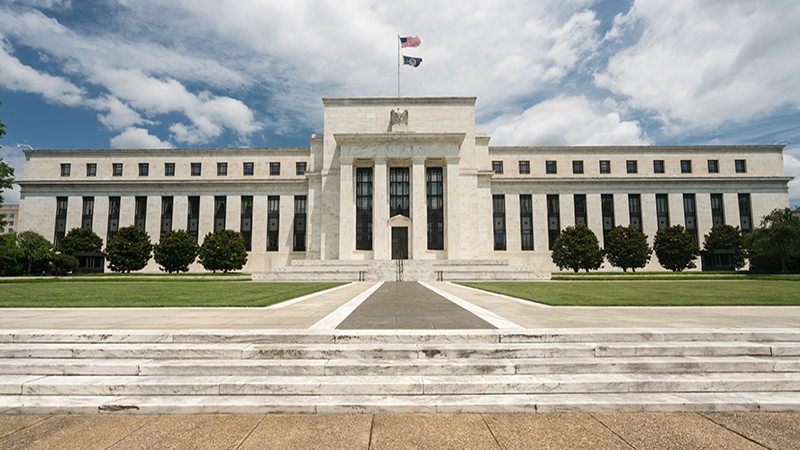The Federal Reserve demonstrated considerable faith in the banking sector on Wednesday (22 March) as it raised the Fed funds rate by 25bps, opting instead to prioritise tackling lingering inflation in the US.
A 4.75-5% funds rate was generally deemed to be the most likely outcome of the Federal Open Market Committee (FOMC) meeting, but there was an element of uncertainty in the lead up to it.
Paul O’Connor, head of the UK-based multi-asset team at Janus Henderson, said: “With the next Fed meeting not until May, hawks were concerned that a three-month pause in the tightening cycle, while the labour market was still hot, would raise big questions about the central bank’s inflation-fighting credibility.
“However, with most analyses suggesting that banking-system stress would lead to a tightening of lending conditions equivalent to one or two 25bps-Fed funds hikes, some felt that the central bank should take a pause here and prioritise financial stability, until tensions in the sector had decisively eased.”
In the end, the committee adopted a dovish tone, according to Silvia Dall’Angelo, senior economist at Federated Hermes. Dall’Angelo said they accepted that the recent banking sector wobble was likely to result in tighter credit conditions for the real economy, while retaining a tightening bias in light of high inflation. However, she identified that they toned the rhetoric down significantly.
“Indeed, the statement said that the committee anticipates that only some additional policy firming ‘may’ be appropriate, implying that they are close to their peak rate and that today’s hike might be the last one in the cycle, given the uncertainty,” she said.
Joost van Leenders, senior investment strategist at Van Lanschot Kempen, said that markets interpreted the decision, and the press conference, as relatively dovish. He pointed out that the two-year yield fell by 15bps and 10-year yields by 5bps, leading to the yield curve steepening by 10bps.
Callie Cox, an investment analyst at eToro, argued the decision ought to cheer investors as it constituted a vote of confidence in the banking sector, even the Fed’s continued commitment to battling high inflation remained clear: “The Fed told us not to worry about the banking system, in both its words and its actions. They’ve decided to keep hiking, and based on new forecasts, they don’t anticipate any major shocks to the economy based on what’s happening to the banks.
“However, it’s clear that the Fed is still concerned about elevated inflation – a scenario that we think markets have discounted a little too much in recent days. If the banking system’s woes don’t eat into growth, then the Fed may have to keep rates higher for longer. The grand pause that everybody thought could come may not be happening for a few more months.”
Anna Stupnytska, global economist at Fidelity International, agreed with Cox, arguing the decision to go ahead with a hike signalled the Fed’s confidence in its ability to contain financial instability, while at the same time keeping sharp focus on taming inflation.
She continued: “The Fed is following the ECB’s template – hiking while switching to a more cautious meeting-by-meeting approach. The Fed could have paused using ongoing stress in the banking system as a valid reason to take some time out. But that could potentially put the Fed’s commitment to taming inflation in question and damage its credibility, a risk the FOMC participants decided not to take at this point.”
However, she warned that the Fed’s biggest risk was the recent hike proving counterproductive, further exacerbating concerns about financial instability, and fuelling market turmoil.
“As the crisis in the banking system continues to unfold, we believe the likelihood of a hard landing scenario – our base case for some time – has risen dramatically in recent days. The current market stress, a symptom of the size and speed of policy tightening to date, is feeding wider spill overs through the bank lending channel to the real economy.”
Richard Carter, head of fixed-interest research at Quilter Cheviot, said the cracks in the banking sector appear to be small and affecting only a handful of players for now. He added that the Credit Suisse fallout will have little impact on the US financial system, leaving the Fed comfortable with its decision to raise rates, despite the impact it will have on the consumer.
However, Carter concluded with a warning: “The events of the last two weeks have shown things can change very quickly and thus further rate rises could have unintended consequences. Inflation is difficult to get under control, and while interest rate rises help do the job, they can also set off another chain of events. The Fed will be hoping this latest one doesn’t do that.”











